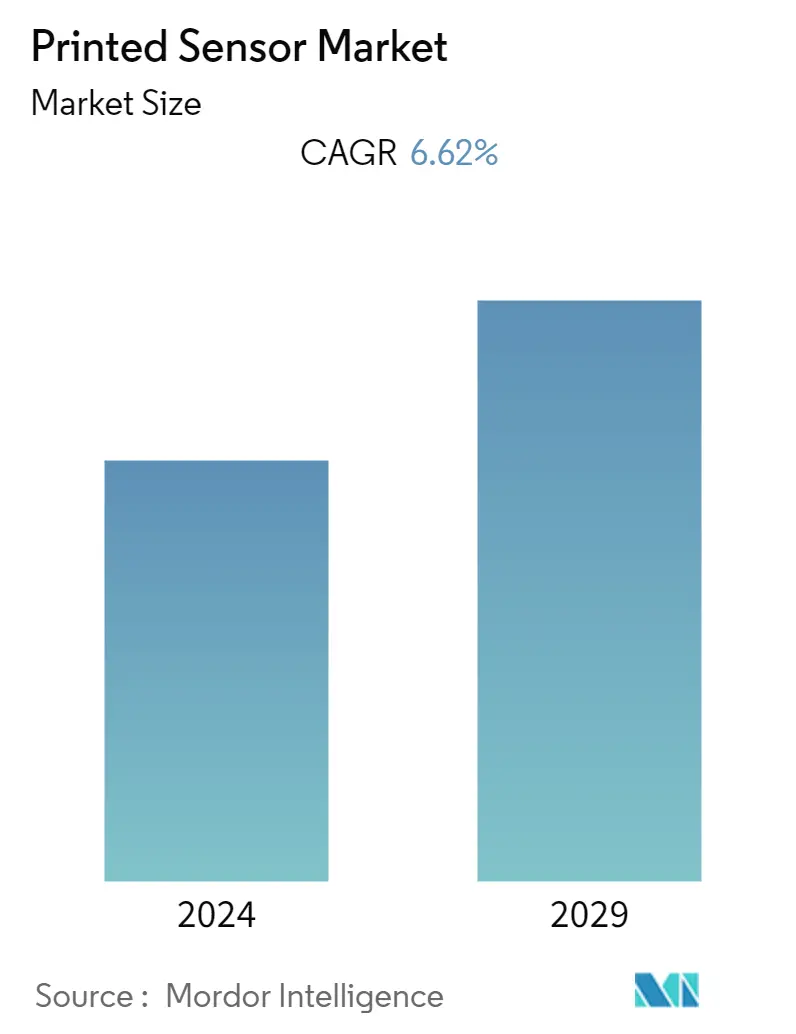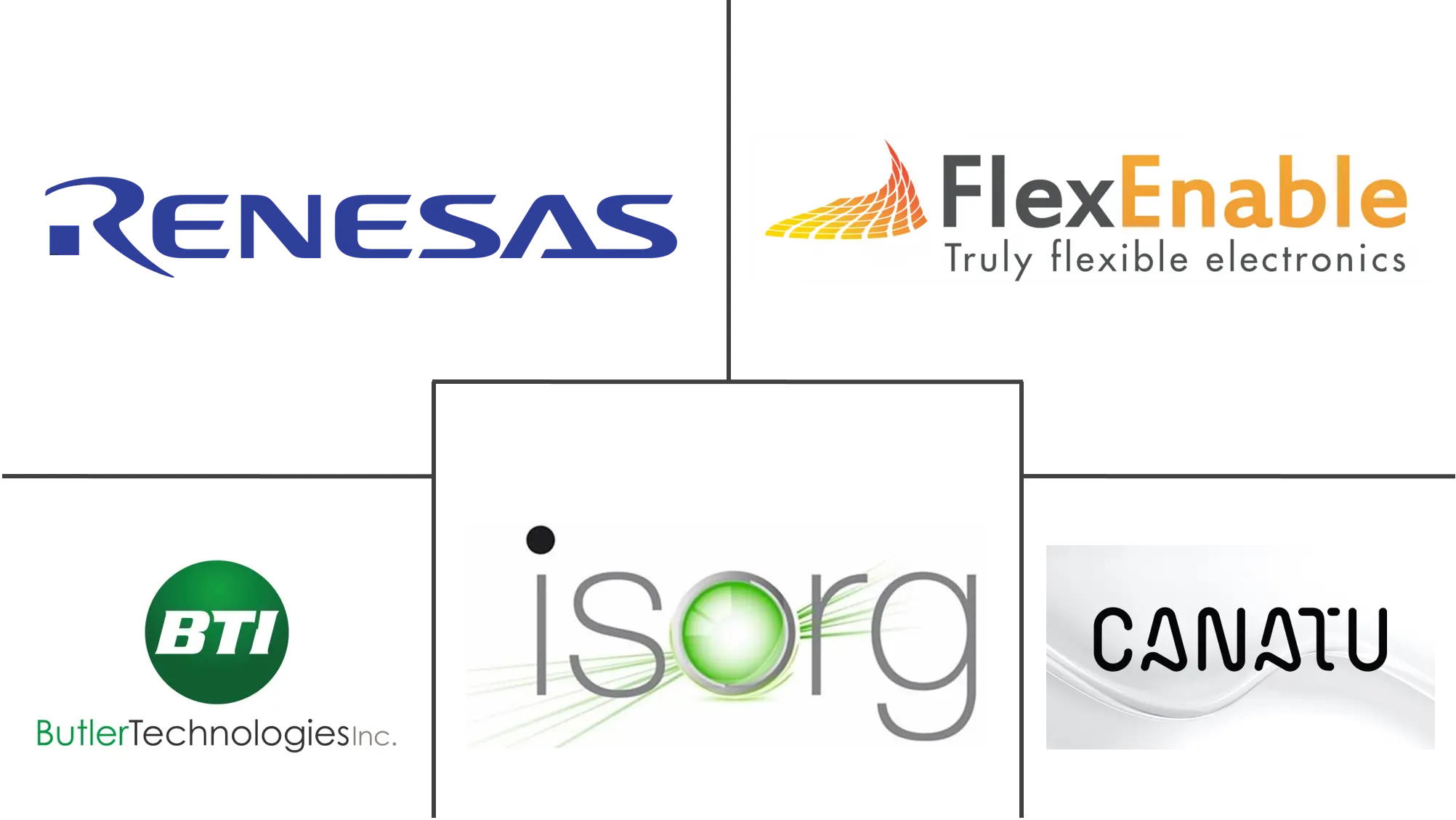Market Size of Printed Sensor Industry

| Study Period | 2019 - 2029 |
| Base Year For Estimation | 2023 |
| Forecast Data Period | 2024 - 2029 |
| CAGR | 6.62 % |
| Fastest Growing Market | Asia Pacific |
| Largest Market | North America |
| Market Concentration | Low |
Major Players
*Disclaimer: Major Players sorted in no particular order |
Printed Sensor Market Analysis
The printed sensor market was valued at USD 8.63 billion in 2020, at a CAGR of 6.62% during the forecast period of 2021 - 2026. The printed sensors technology costs less and can be manufactured on a large scale, providing high economies of scale to manufacturers. High demand from smart packaging is another factor driving the growth of the market. Smart packaging helps easier tracking and reduced packaging costs.
- The manufacturers of the printed sensor will have low input costs due to the achievement of economies of trade. Due to the constant design, the manufacturers can achieve economies of trade and thus reducing the cost and maximizing the profit margin.
- Since printed electronics are thin, lightweight, flexible and yet robust, they can be integrated very well into packaging, either during production or as an affixed e-label. This drives the adoption rate of the printed sensor in the smart packaging industry.
- The initial setup of the manufacturing of printed sensors need substantial investment due to the high equipment technology. This acts as a restraint as the high investment costs acts as a barrier for small manufacturers.
Printed Sensor Industry Segmentation
The printed sensor works with the development of printed sensors, investigation of the physical properties of ink and substrate interaction as well as RFID technology and system integration. The main manufacturing method is ink-jet printing, but flexo and screen printing are also used . The inks used are mostly nano-particle inks.
| By End-User Industry | |
| Geography | |
Printed Sensor Market Size Summary
The printed sensors market is experiencing significant growth, driven by the technology's cost-effectiveness and scalability, which offer substantial economies of scale to manufacturers. The demand for printed sensors is particularly strong in the smart packaging sector, where they facilitate easier tracking and cost reduction. The lightweight, flexible, and robust nature of printed electronics makes them ideal for integration into packaging, either during production or as affixed e-labels, thereby enhancing their adoption in the industry. However, the initial investment required for setting up manufacturing facilities poses a challenge for smaller manufacturers, as it involves high equipment costs.
In the consumer electronics sector, printed sensors provide capabilities that traditional silicon sensor systems cannot, such as flexible form factors and rapid response to stimuli. This is particularly beneficial for the miniaturization of devices, where compact and bendable designs are preferred. The Asia-Pacific region is emerging as a key area for printed electronics, attracting investments from foreign companies due to the rising demand in consumer electronics manufacturing. The market is characterized by a diverse range of players, with no single entity dominating, making it an attractive investment opportunity. Recent strategic acquisitions and agreements, such as FlexEnable's acquisition of Merck's OTFT materials and collaborations between Isorg and Sumitomo Chemical, highlight the ongoing innovation and development in the field.
Printed Sensor Market Size - Table of Contents
-
1. MARKET DYNAMICS
-
2. MARKET SEGMENTATION
Printed Sensor Market Size FAQs
What is the current Printed Sensor Market size?
The Printed Sensor Market is projected to register a CAGR of 6.62% during the forecast period (2024-2029)
Who are the key players in Printed Sensor Market?
FlexEnable Limited, Renesas Electronics Corporation, Canatu Oy, Butler Technologies and ISORG are the major companies operating in the Printed Sensor Market.

